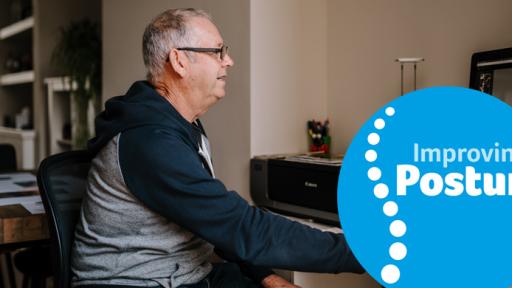This page is one of a series on understanding and improving your posture.
We all need to pay attention to our posture when we are sitting but MS presents particular challenges.
If you have weakness, stiffness and fatigue it's hard to maintain good posture but it's also all the more important to avoid worsening of these problems.
The good news is, there are some simple things you can do to ensure you sit well and comfortably.
The spine is designed in an 'S' shape. It is strongest and works best in this neutral position. The core muscles in your back and abdomen help to keep your back and pelvis in this neutral 'S' shaped position and maintain a good posture.
If your core muscles are weak, the spine loses its neutral shape. This can result in too big a curve in your back or flattening of the spinal curve, leading to slouching.
If you slouch or stoop, your head tends to jut forward, rather than sitting in line with your shoulders. The whole weight of your head (about 7kg or the weight of three bags of sugar) will then hang on the small neck and shoulder muscles. This can cause neck and back strain.
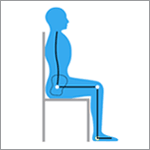
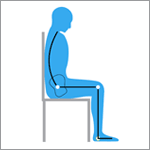
Fatigue can have a big impact on your posture. The natural tendency is for your body to sag and slouch with the effects of gravity when you're fatigued.
If you hold these slumped postures for any length of time, over weeks, months or years, your muscles may adapt to this new posture causing stiffness or pain.
You can correct your posture when you're sitting as by running through a mental posture checklist. Going from bottom to top:
- Sit well back in your seat with both feet flat on floor
- Your ankles, knees and hips should be at right angles, with your thighs level with the knees. You may need to swap chairs or grab some cushions if your seat is too high or low
- Have a wriggle to make sure you're sitting on the bony points of the bottom and make sure your pelvis is directly under the points of the shoulders. This should give you a gentle curve in the lower low back
- Check that your body weight is equal on both bottom cheeks.
- Bring your head into the midline, on top of and in line with the shoulders.
- Finally, tuck in your chin.
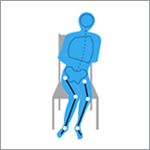
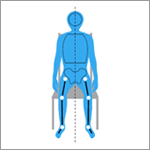
If you notice you're tensing, try to imagine a helium balloon with a string that is attached to the back of your head. This should help you lengthen your neck, keeping your chin gently tucked in, your chest open and your shoulders relaxed down and back.
If anything causes you pain, stop and consult a therapist to check you're doing the movement correctly. This information is meant as a guide to posture exercises, and not to replace the advice of a healthcare professional.
The first step to better posture is awareness that it needs improving. Initially when you try and sit or stand with a better posture it will feel weird as you aren't used to it.
You may find it difficult to hold a good posture for long periods of time as your postural muscles may have become weakened and tire quickly. This is normal. With practice, it will become easier until it becomes more automatic.
For a visual representation of the information covered in the text, view the video at the top of the page.




